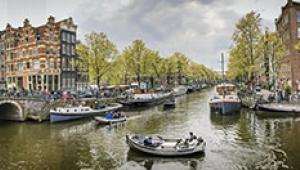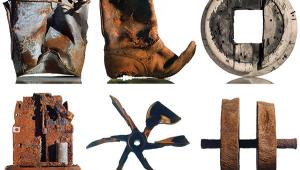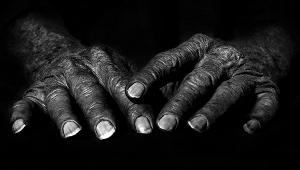Jailhouse Wreck: A Photographer’s Project Documents a Prison’s Decay

Proximity was a factor: corporate and advertising photographer Robert Rathe lives about 10 miles from the long-closed Lorton Correctional Complex in Fairfax County, Virginia. So was a fascination with the concept of what constitutes a prison—physical structure or state of mind? And so was the attraction of documenting and preserving a bit of local history.
With permission, Rathe visited the Lorton site about a dozen times over two years. “Often I was literally one step ahead of the construction crews,” he says. “Many buildings were already gone and new buildings were going up; there was already an arts center on the site. Out of camera range in several photographs are architects’ plans lying on the floor.”
He photographed exteriors in black and white, interiors in color—“the inmates’ world was inside; the outside was a different world.” He photographed cells, common rooms, shower rooms, hallways, signs—and oddities: a mannequin on the floor of a garage area; what appear to be bloody handprints and a gang symbol on a cell wall; the tennis ball visible in this photo. “Once I walked into a cell and saw a noose made from what looked like sheet parts hanging from a light fixture. I’d heard a rumor a prisoner had committed suicide in one of the cells. Maybe the noose was someone’s grim joke.”
At the start of his project a security guard who was a former Lorton maintenance worker would accompany him. Later on he roamed by himself. Cell blocks and buildings were unlocked for him, but he would grab the open padlocks on his way in. “I didn’t want some security guard to come along and think, I wonder why this is unlocked? So I took them with me and put them back when I left.”
The first time he went in he shot about 50 percent of the photos he’d get over the two-year period. “The take got less and less on each successive visit,” he says. “First it’s endless possibilities, but pretty soon it narrows. At the end I was looking to fill holes in the narrative—artwork on the cell walls, abstract images, signs, things left behind by the prisoners.”
Now the project is down to compiling, editing, and arranging. He’s thinking of a book and planning postings to Instagram to share what he’s seen, and what is now gone. “Some of the places I shot are already condos,” he says. “I was recording, documenting what’s disappearing. A lot of photographers are doing that.”
Tech Talk: Robert Rathe made the photograph with a Nikon D7000 and an AF-S DX VR Zoom-Nikkor 18-200mm f/3.5-5.6G IF-ED lens. The settings were 1/2 second, f/13, ISO 200, manual exposure, and Matrix metering.
Images at Robert Rathe’s website, robertrathe.com, showcase his versatility and range of interests.
- Log in or register to post comments

















































